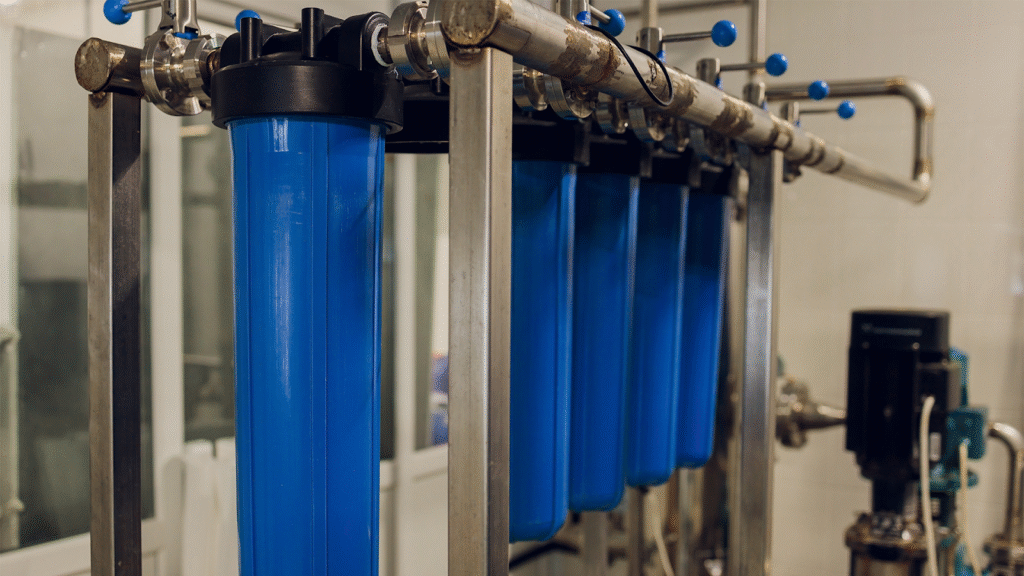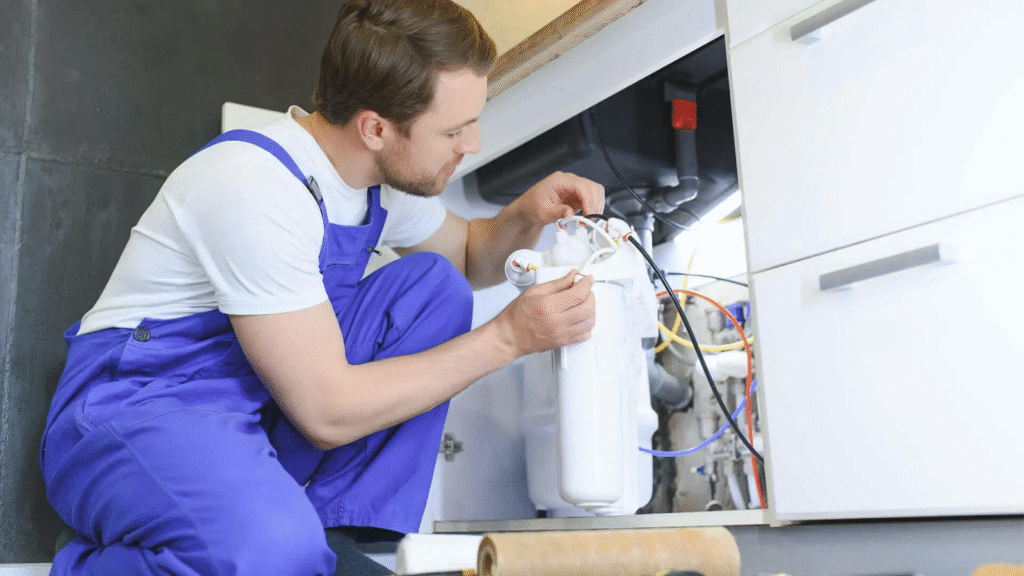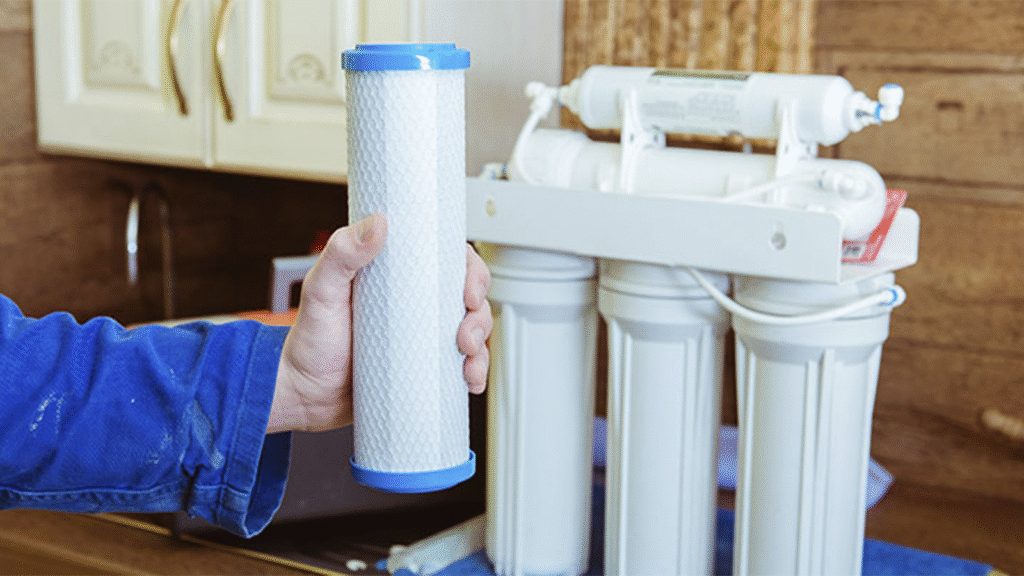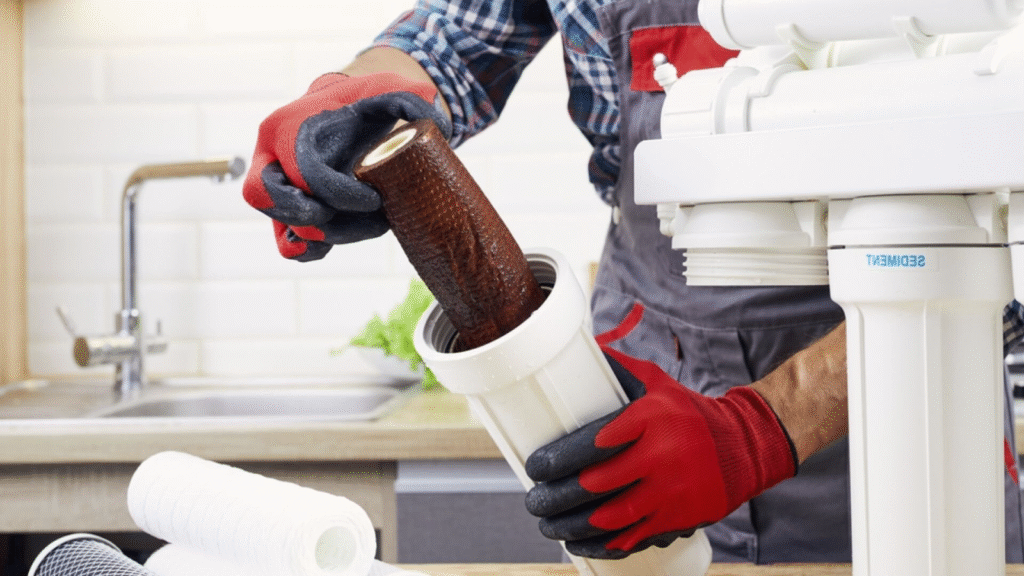Table of Contents
ToggleMeet Sarah: A Condo Owner Who Didn’t Know What She Was Getting Into
Sarah bought a modern condo in downtown Edmonton two years ago. Everything was perfect, except the water. Hard water left her dishes spotted, her hair dry, and her brand-new dishwasher running poorly. So, she did what any smart homeowner would do: she researched water softeners.
She found the perfect compact system, called a local installer, and prepared for delivery.
Then came the email.
“As per Bylaw 3.4.12 of our condominium regulations, no alterations may be made to plumbing infrastructure without prior written approval of the Board.”
Suddenly, Sarah wasn’t just installing a water softener. She was navigating by laws, plumbing clauses, drainage rules, and conflicting advice.
If you live in a condo and want better water, you are not alone, and you are stuck.
This guide breaks down everything you need to know about condo water softener installation in Edmonton, so you can protect your plumbing, your appliances, and your right to clean, soft water.

Why Condos Are Different from Detached Homes (Legally and Technically)
Water softener installation in a standalone house? You own it. You run it. You install it.
But a condo is part of a shared ecosystem, which means your plumbing, walls, and even your drains often connect to communal infrastructure. That changes everything.
Key Differences:
- Shared Plumbing Systems: In many condos, water lines branch from a central supply and affect multiple units.
- Wall Penetration Rules: You can’t cut into drywall or tile without board approval.
- Drainage Access: Softener discharge must use approved lines, not just your nearest sink or laundry basin.
- Electrical Supply: Not all mechanical rooms are wired for softener-safe 110V outlets.
- Noise/Vibration Policies: Regeneration noise can affect neighbors; some boards ban noisy units outright.
For more on the technical side, see the Water Softener Installation Guide in Edmonton.
What the Alberta Condominium Property Act Says (In Simple Terms)
The Condominium Property Act of Alberta doesn’t say “no water softeners”, but it gives Condo Boards the power to restrict any personal upgrade that could affect shared systems or property value.
What does it mean for you:
- You must request written approval before altering plumbing or drainage.
- You are responsible for repairs if your installation causes damage to another unit or shared system.
- The board can ask for removal if the installation violates code, even after it’s complete.
- Some condos include plumbing in their unit factors (shared ownership), meaning you may need full board sign-off for even minor changes.
Your rights matter, but so do your responsibilities. Understanding both makes your case much easier.
4 Common Restrictions Most Condo Boards Enforce in Edmonton
While every building is different, these are the four most common restrictions Edmonton condo owners face:
1. No Plumbing Modifications Without Approval
Even if it’s just adding a tee connection, most boards treat it as a material change.
2. Drainage Concerns
Brine discharge can’t flow into laundry drains, sumps, or tubs unless routed properly with an air gap, especially important in multi-story units.
3. Weight and Space Limits
Some condo mechanical rooms are too small or not rated for certain tank sizes. Others don’t allow salt storage in common areas due to the risk of spillage.
4. Noise Policies
If your unit shares a wall with another, regeneration noise or valve cycling might violate noise bylaws, especially at night.
Want to know more about winter considerations? Read the Winter Water Softener Installation Guide.
Types of Water Softeners Suitable for Condo Units
You don’t need to compromise quality for condo compliance; you just need the right type of system.
Best Options for Condos:
Compact Salt-Based Units
These systems utilize ion exchange, similar to standard softeners, but have a smaller footprint. Ideal for 1–2 residents.
Cabinet-Style Softeners
Brine and resin tanks are integrated. These are easier to install in tight mechanical closets.
Salt-Free Conditioners
While not true softeners, TAC (template-assisted crystallization) units reduce scale without drainage requirements. Easier board approval.
Reverse Osmosis (RO) with Pre-Filtration
If you can’t install a whole-unit softener, consider a kitchen RO filter that removes some hardness at the tap.
Pro Tip: Ask your installer for “condo-optimized” options, they often come pre-sized for local bylaws and builder specs.

How to Build a Case to Your Condo Board (and Get a Yes)
Boards aren’t trying to block you from clean water; they’re trying to prevent building-wide plumbing nightmares. Your goal is to position your request as safe, contained, and professionally managed.
Include These in Your Application:
- A summary of your request (e.g., “I’m requesting permission to install a compact, cabinet-style softener inside my unit’s utility room.”)
- A product brochure or spec sheet (especially if it includes noise rating, size, and certification)
- A drawing or photo of your installation space
- A quote or statement from a licensed Edmonton installer
- Confirmation that the unit will include:
- Proper air gap for drainage
- Access to a dedicated outlet
- Noise ratings within building guidelines
- No penetration of common walls
If you’re considering hiring a professional, check out Hiring a Plumber for Water Softener Installation.
Your Pre-Approval Checklist: What to Gather Before You Submit
The more prepared you are, the faster and more confidently your board can approve your request. Before sending anything to the board, make sure you’ve confirmed:
- Your softener is CSA/NSF certified
- Your installer is licensed and insured in Alberta
- The softener fits within the floor load limits and the mechanical room clearance
- There’s access to an approved drain with slope
- Your outlet is GFCI protected and won’t overload a circuit
- You understand your building’s specific policy on system modifications
What Happens During a Professional Condo Installation
Approved? Congrats. Here’s what the installation process usually looks like:
Step 1: Site Visit
Installer checks:
- Water line entry point
- Outlet proximity
- Brine discharge options
- Soundproofing if needed
Step 2: Install Scheduling
Many condo boards require:
- Pre-booked service window
- Work during 9 am–5 pm weekdays
- Access to the unit by the building manager
Step 3: System Setup
Installer:
- Installs bypass valve
- Connects lines using flexible or PEX connections
- Route the drain with a proper air gap above the floor basin
- Tests for leaks and pressure drop
- Programs system based on local hardness
Step 4: Final Sign-Off
Some buildings request a final walk-through or inspection. Save receipts, warranty cards, and installation reports in case you need proof later.
FAQs from Edmonton Condo Owners Trying to Install Softeners
Can my building ban softeners outright?
They can restrict certain types (e.g., noisy, oversized), but if your install is internal and self-contained, most boards allow them with proper steps.
Do I need a permit?
Typically, no, unless your installation changes existing electrical/plumbing infrastructure. Your installer can confirm.
What if a leak happens later?
You are liable for any damage caused by your unit. That’s why choosing a pro with insurance and regular system checks is essential.
Can I install it myself?
Technically? Sometimes. Practically? Rarely advised. Most boards require licensed trades for any water line modifications.
Final Words
You don’t need to own a detached home to enjoy the benefits of soft water.
Yes, condo water softener installation in Edmonton takes a few extra steps, a few more emails, and a bit more patience, but it’s worth it.
With the right product, a professional installer, and a cooperative approach, your board will see that what you’re asking for isn’t a liability. It’s an upgrade. For your appliances. For your health. For your peace of mind.
Want help navigating your condo’s rules and getting a softener that fits your space and bylaws? Water Softener Edmonton offers condo-compliant systems, custom install reports for board approval, and expert local guidance.



